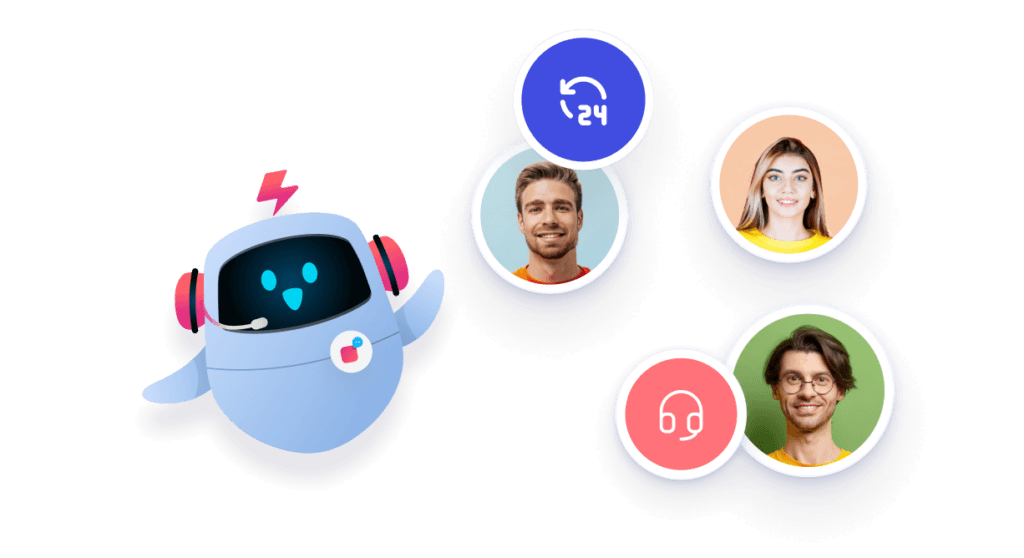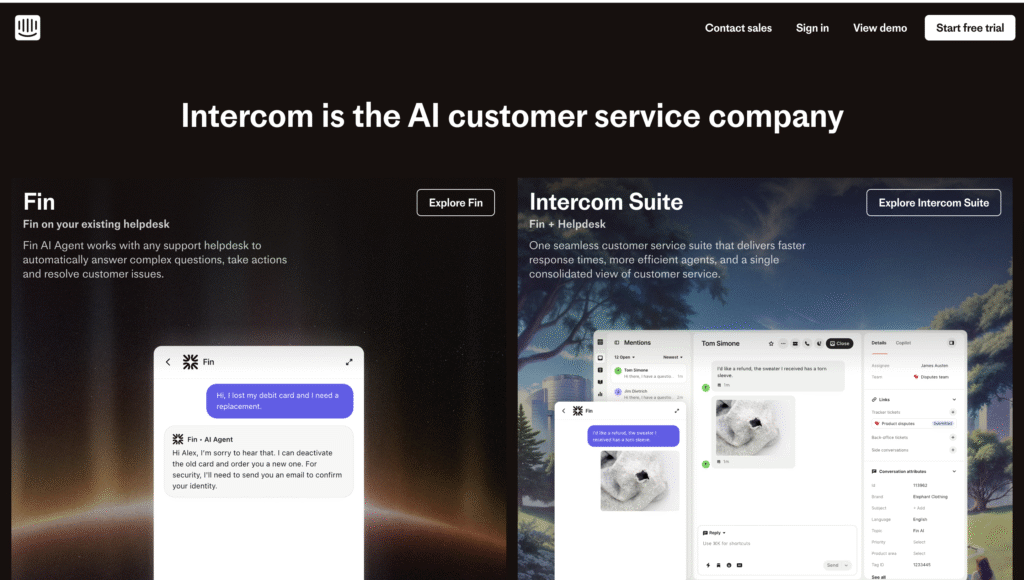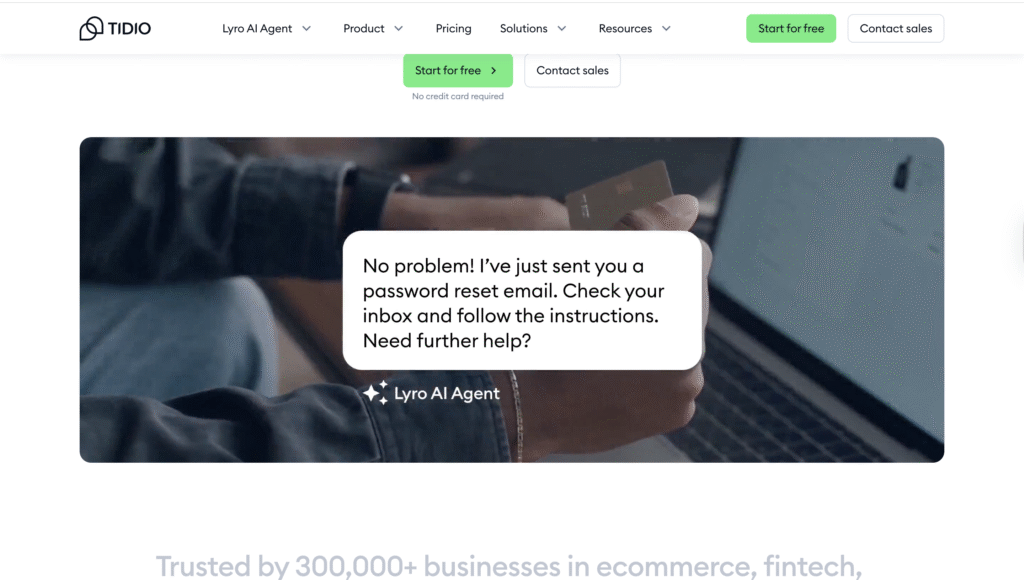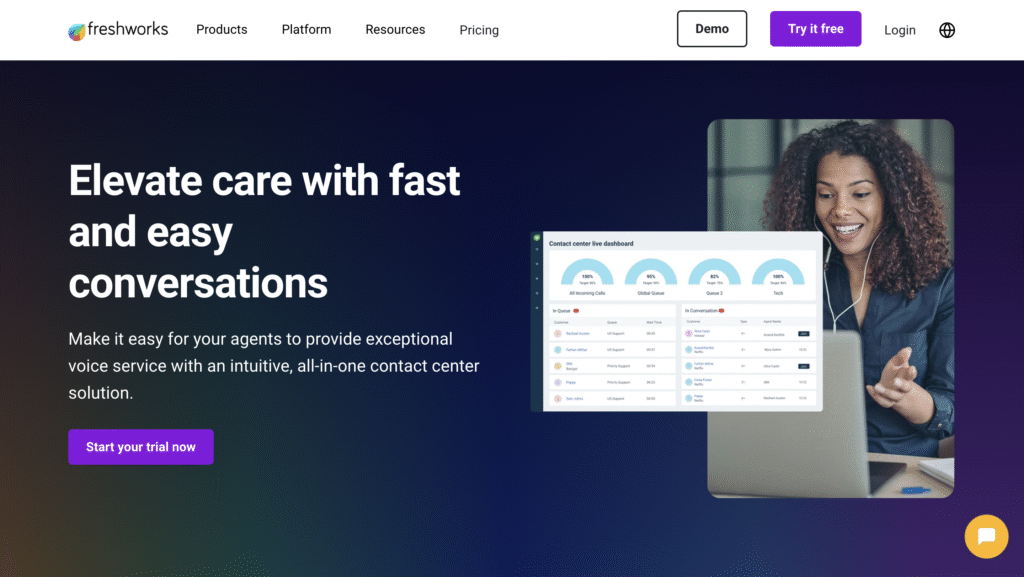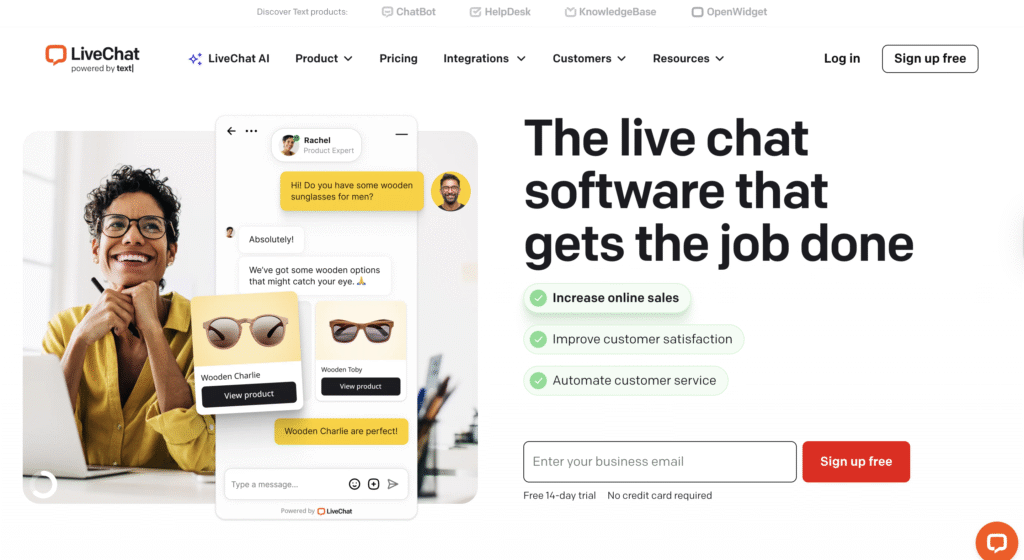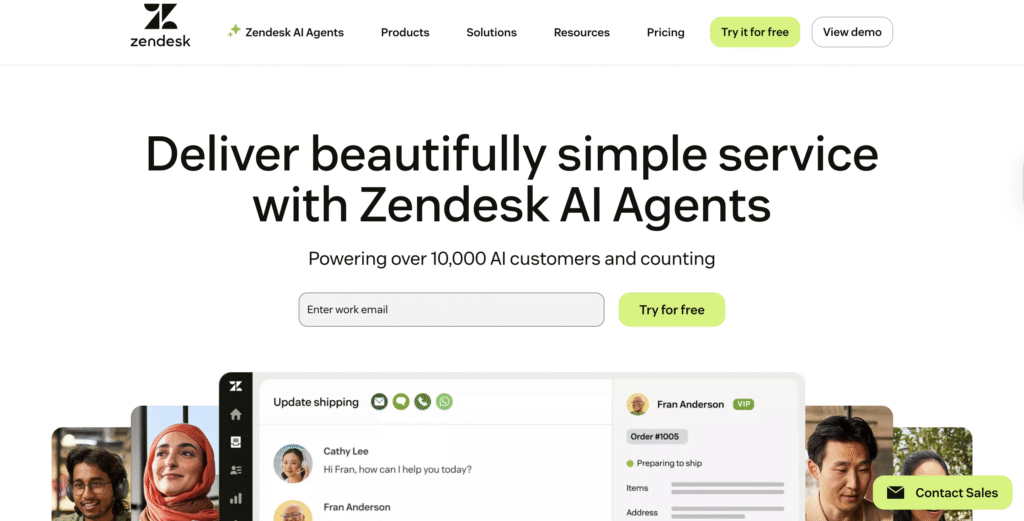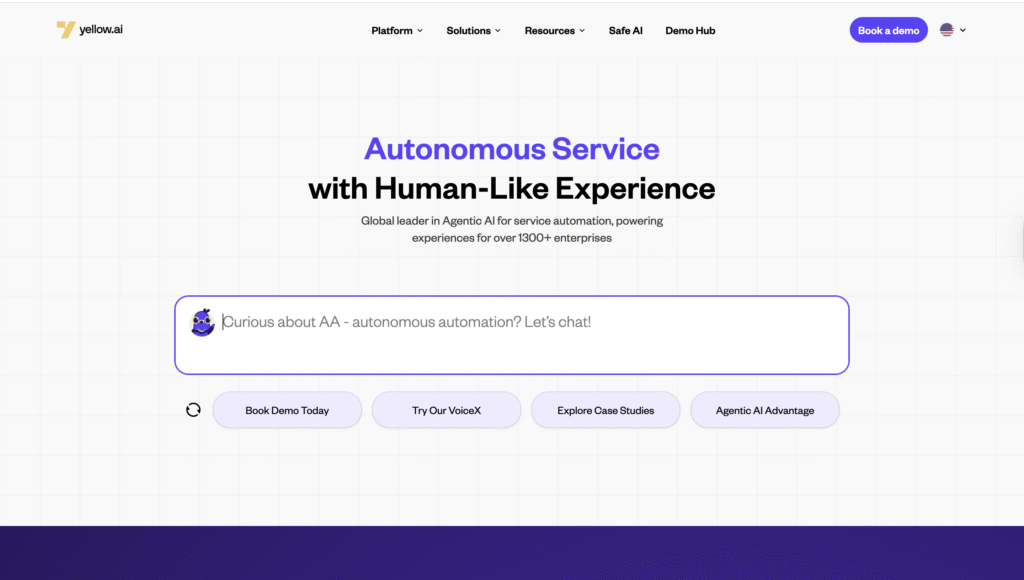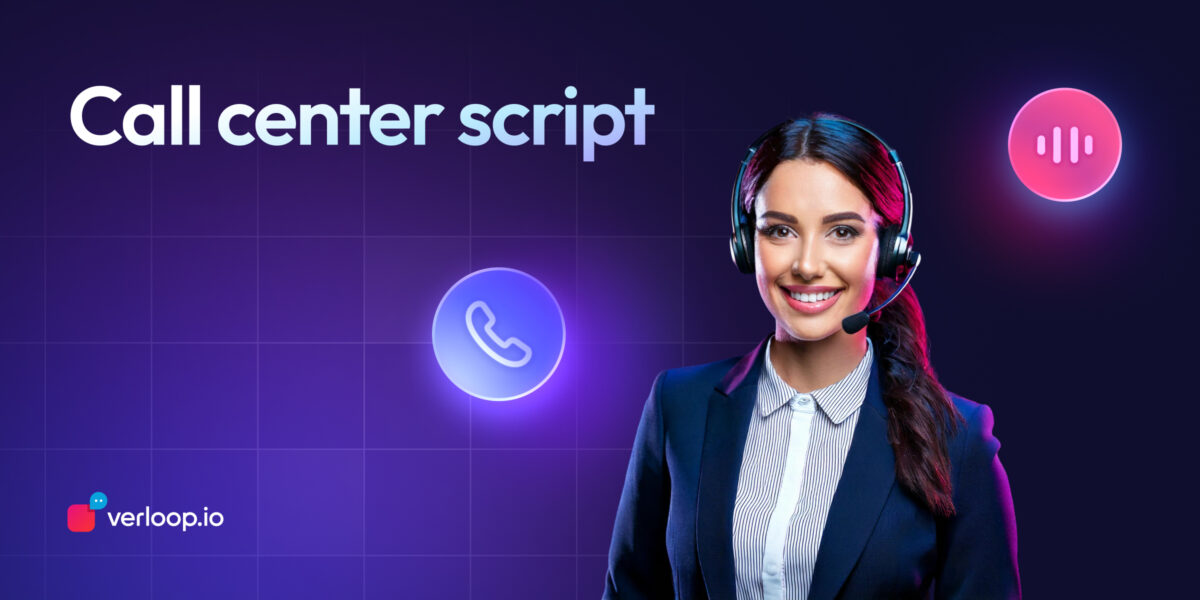Top Alternatives to Drift
- August 12th, 2025 / 5 Mins read
-
Aarti

Top Alternatives to Drift
- August 12th, 2025 / 5 Mins read
-
Aarti
Top Drift Alternatives and Competitors
Drift, a leader in conversational marketing, is now operating under the umbrella of Salesloft, continuing to offer its AI-driven solutions. However, despite its robust offerings, some users have raised concerns that might make businesses think twice before committing. As one G2 user shared, while Drift’s interface is intuitive, it can come with a steep learning curve, making it overwhelming for new users to fully leverage its extensive features without adequate support.
The platform’s ease of use can be a double-edged sword. Although basic setups are relatively straightforward, integrating Drift with multiple systems can become complex. Customisation often requires technical expertise or additional support that isn’t always readily available, and users have noted that customer support, while responsive, can sometimes be slow, particularly for more intricate issues.
Additionally, although Drift offers a wide range of features, this very abundance can lead to feature bloat. With so many tools to choose from, it can be difficult to pinpoint the ones most relevant to your business, and the platform can sometimes generate low-quality conversations, requiring constant fine-tuning to filter out irrelevant interactions. Integration, too, isn’t always seamless. Despite Drift’s compatibility with many tools, some integrations may require troubleshooting, making the overall user experience a bit more cumbersome than expected.
With the chatbot market growing rapidly—projected to reach USD 27.29 billion by 2030—it’s clear that businesses need the right tool to meet their evolving needs. But with Drift’s shortcomings in areas like user onboarding, integration, and support, how can you find the perfect alternative?
Let’s explore some top options for conversational AI solutions that could provide a smoother, more streamlined experience for your business.
What is Drift?
Drift is a human-centric, AI-powered platform designed to revolutionise the B2B buying experience. It helps businesses engage with buyers in a more personalised and meaningful way by automatically listening, understanding, and learning from their interactions. Through this process, Drift delivers tailored experiences at every touchpoint of the buying journey, transforming how businesses connect with potential customers.
At its core, Drift turns conversational data and buyer behaviour into valuable insights that drive deeper customer relationships, more pipeline, and ultimately, increased revenue. It offers a streamlined approach to modernising the B2B website experience, ensuring that sales teams no longer waste time switching between multiple tools and systems. Instead, Drift enables them to focus on what they do best—building pipeline, closing deals, and nurturing long-term customer relationships.
Drift was created with a single purpose: to transform the B2B buying process by making it faster, more efficient, and more human. As the buying landscape continues to evolve, Drift remains committed to innovating and adapting to ensure businesses stay ahead of the curve and deliver the best customer experience possible.
Why Businesses Are Looking for Drift Alternatives?
While Drift has undeniably made a mark in conversational AI, many businesses are finding themselves exploring alternatives for various reasons. Some users have reported challenges that could impact long-term satisfaction and functionality, especially as organisations scale. For instance, one reviewer mentioned how occasionally leads were assigned to territories outside of their reach, which may be more of an organisational issue with Salesforce integration than a flaw in Drift itself, but still, it creates unnecessary complications for users.
Below are some of the reasons businesses are exploring Drift alternatives:
Occasional Instability: Some users have noted that Drift occasionally crashes or causes sign-in issues, leading to missed customer interactions and delayed responses.
Limited Customisation: Drift’s chatbot customisation options, while useful, may not offer the level of personalisation that businesses need to fully align with their unique branding and requirements.
Lack of Advanced Reporting: While Drift provides basic reporting features, businesses looking for in-depth, customisable reports to gain actionable insights may find Drift’s offerings insufficient.
Integration Challenges: Although Drift supports many third-party applications, integration with some tools can be less seamless, creating potential disruptions in the tech stack.
Pricing for Smaller Businesses: Drift’s premium pricing plans, starting at $2,500 per month, may be too costly for smaller businesses looking for more affordable solutions with similar functionalities.
Feature Overload: With a wide range of features, Drift can sometimes overwhelm users, leading to difficulties in identifying and utilising the most relevant tools.
While Drift has its merits, businesses seeking simpler, more customisable, or cost-effective options are exploring alternatives that provide more streamlined solutions and better customer support.
What to Look for in Drift Alternatives?
When considering alternatives to Drift, it’s important to focus on features that can enhance your business operations, improve customer engagement, and cater to your specific needs. Here are some essential factors to keep in mind when evaluating Drift alternatives:
Customisation and Personalisation Options
Look for platforms that provide robust customisation options, allowing you to align the chatbot experience with your brand’s voice and customer journey. Features that personalise interactions based on customer behaviour can also significantly boost customer satisfaction and engagement.
Advanced Reporting and Analytics
Drift offers basic reporting, but businesses may require more advanced and customisable analytics. Seek alternatives that provide detailed insights into lead qualification, customer interactions, and campaign performance, helping you make data-driven decisions.
Seamless Integrations
Integration issues with third-party applications can be a pain point for Drift users. When evaluating alternatives, ensure the platform integrates seamlessly with your existing CRM, marketing tools, and other applications, allowing your team to work more efficiently.
Ease of Use and User-Friendly Interface
While Drift is known for its intuitive interface, other alternatives should also offer a seamless and easy-to-navigate user experience. This will help reduce training time and allow your team to focus on using the platform effectively.
Scalability
As your business grows, so will your customer engagement needs. Choose alternatives that are scalable and offer flexibility to support future growth. This includes adding new features, expanding your user base, and managing larger volumes of customer interactions.
Affordability and Flexible Pricing
Drift’s pricing might not be ideal for smaller businesses. Look for alternatives that offer flexible pricing plans, catering to businesses of all sizes. Ensure the features included in each pricing tier provide the best value for your investment.
24/7 Customer Support
Reliable customer support is crucial when managing customer interactions. Drift has received mixed reviews for its support, so make sure the alternatives you explore offer responsive, 24/7 customer service to address any issues promptly.
Automation and AI Features
Drift’s core value lies in its automation and AI-driven features. When considering alternatives, ensure the platform provides intelligent chatbots capable of handling lead qualification, scheduling, and automating customer interactions with minimal manual intervention.
Mobile and Remote Access
Drift’s mobile experience has been criticised at times. It’s important to check if the alternatives you are considering offer a solid mobile interface, especially for teams that need to manage customer interactions while on the move.
Top 10 Alternatives to Drift
When looking for a Drift alternative, it’s important to explore platforms that offer the right balance of functionality, ease of use, and value for your business. Here’s a list of the top 10 alternatives that could be the perfect fit for your needs:
1. Verloop.io
Verloop.io is a powerful AI-driven platform that offers a seamless blend of live chat, AI chatbots, and automation, designed to enhance customer interactions. With a strong focus on customer experience (CX), it integrates advanced Large Language Models (LLMs) and generative AI features to improve lead qualification, automate customer support, and optimise sales processes.
Key Features of Verloop.io:
Generative AI and LLM Capabilities: Verloop.io leverages large language models (LLMs) and generative AI to power intelligent conversations, enabling natural, human-like interactions. This helps businesses offer a more personalised and efficient customer experience.
Omnichannel Support: Verloop.io offers seamless integration across multiple channels, including WhatsApp, Facebook, and web chat, allowing businesses to engage with customers on their preferred platforms.
AI-Driven Lead Qualification: The platform uses AI to automatically qualify leads by asking relevant questions, filtering out low-value prospects, and handing over high-quality leads to the sales team. This improves the efficiency of sales teams and reduces time spent on irrelevant leads.
24/7 Customer Support: With Verloop.io, businesses can provide round-the-clock support through AI chatbots, ensuring that customers receive immediate assistance regardless of time zones.
Customisable Chatbots: The platform allows users to build and deploy custom chatbots that can handle a variety of tasks, from answering frequently asked questions to scheduling appointments.
Analytics and Reporting: Verloop.io offers in-depth analytics and reporting tools, helping businesses track performance, measure key metrics, and make data-driven decisions.
CRM Integration: It integrates with popular CRM systems, including Salesforce, HubSpot, and Zoho, making it easy to manage customer relationships and track interactions.
Why Consider Verloop.io:
Advanced LLM and generative AI capabilities for human-like interactions
Seamless omnichannel engagement for customers
Powerful lead qualification and automation features
Highly customisable chatbots and CRM integrations
2. Intercom
Intercom is a robust platform for customer messaging and support, offering live chat, bots, and a knowledge base. It’s known for its powerful AI-driven tools that automate customer interactions, help qualify leads, and provide immediate support. With the integration of Fin, Intercom’s advanced AI agent, businesses can improve efficiency and deliver higher-quality customer service.
Learn more about AI Agents
Key Features of Intercom:
AI-Driven Automation: Intercom offers intelligent bots and AI tools that automatically handle common inquiries, allowing your team to focus on more complex issues.
Lead Qualification: Intercom’s AI assists in qualifying leads before passing them off to the sales team, improving conversion rates and reducing the time sales teams spend on low-value prospects.
Comprehensive Support Suite: Intercom integrates seamlessly with CRM systems like Salesforce, HubSpot, and Zendesk, providing a complete, unified view of customer interactions.
Why Consider Intercom:
Advanced AI and automation features
Extensive integrations with CRMs and other tools
Strong customer support capabilities
Fin AI Agent: Intercom’s Fin is a highly advanced AI agent designed specifically for customer service. It instantly answers queries, resolves the majority of your support volume, and seamlessly transitions to human agents when needed.
Fin Features:
Analyze: Fin provides deep, actionable insights and AI-powered suggestions to optimise performance.
Train: Businesses can configure Fin’s knowledge, behaviour, tone, and actions to meet their specific needs.
Test: A complete testing suite allows businesses to refine Fin’s answers before going live.
Deploy: Fin can be deployed across multiple channels, helping businesses deliver seamless support at scale.
Pros and Cons of Intercom
| Pros | Cons |
|---|---|
| Advanced AI and automation features | Occasional delays in handoffs to human agents |
| Seamless CRM integrations | Struggles with very complex or niche queries |
| Highly scalable and customisable | Limited ability to detect duplicate knowledge base articles |
| Fin delivers high-quality answers | Requires fine-tuning for more advanced topics and context |
| Provides real-time insights and performance data | Occasional frustrations due to generic or repetitive responses |
3. Tidio
Tidio is an easy-to-use customer support platform that combines live chat, AI-powered chatbots, and automation to streamline communication and improve customer service. It’s especially popular among e-commerce businesses for its seamless integrations with platforms like Shopify and WooCommerce.
Key Features of Tidio:
All-in-One Customer Support Suite: Tidio includes a help desk, live chat, chatbot automation, and AI agent features.
Lyro AI Agent: Lyro, Tidio’s conversational AI agent, can resolve up to 64% of customer inquiries without human intervention, offering fast and efficient support.
E-commerce Integrations: Tidio integrates smoothly with Shopify, WooCommerce, and other platforms, making it ideal for online businesses.
Multichannel Support: Manage conversations from multiple channels like email, Messenger, Instagram, and WhatsApp in one unified dashboard.
Automation: Use rules-based chatbots and flows to automate responses and recover abandoned carts.
Why Consider Tidio:
Affordable pricing plans, starting with a free option
Fast live chat capabilities and automated responses
Seamless integration with e-commerce platforms like Shopify and WooCommerce
Real-time support and AI-powered chatbots
Pros and Cons of Tidio
| Pros | Cons |
|---|---|
| Easy to use with a clean, intuitive interface | Some automation rules and chatbot flows have a learning curve |
| Affordable pricing plans for small businesses | Advanced features are locked behind higher-tier plans |
| Multichannel support (email, Messenger, WhatsApp, etc.) | Pricing can become costly for businesses needing advanced features |
| Powerful AI agent (Lyro) can resolve 64% of queries | AI options are still basic and struggle with complex queries |
| Fast setup and seamless integration with Shopify | Minor syncing issues with third-party integrations occasionally arise. |
4. Freshchat
Freshchat is a modern messaging platform designed to engage customers across various channels such as web chat, email, phone, and social media platforms like WhatsApp, Instagram, and iMessage. With powerful AI chatbots and automation tools, Freshchat makes it easy to qualify leads, automate responses, and provide seamless customer support.
Key Features of Freshchat:
AI-Powered Chatbots: Freshchat includes native AI chatbots that can be easily built using a no-code builder, helping businesses provide personalised self-service at scale.
Multichannel Support: Engage with customers through live chat, email, WhatsApp, Instagram, and more, all within one unified dashboard.
Journey Builder & Playbooks: Stay ahead of customer needs with Freshchat’s journey builder and pre-made playbooks, allowing for proactive customer support.
Customer Insights: Access detailed customer conversation history, enabling agents to provide personalised experiences.
Why Consider Freshchat:
Simplified user interface
Automated messaging for lead qualification
Seamless integration with Freshdesk and other tools
Pros and Cons of Freshchat
| Pros | Cons |
|---|---|
| Easy to use with a simple, intuitive interface | Some advanced features require guidance and have a learning curve |
| AI-powered chatbots and automation improve efficiency | Limited reporting and analytics options for more complex use cases |
| Seamless integration with multiple communication channels | Can be costly for small businesses needing advanced features |
| Customisable journey builder and playbooks | Lacks some integrations unless using advanced plans |
| Multi-language support for global businesses | Some issues with spam management and handling multiple conversations |
5. LiveChat
LiveChat is a premium live chat software designed to deliver fast and personalised customer support. With an intuitive interface, real-time visitor tracking, and automation features, LiveChat is a strong alternative to Drift for businesses of all sizes. It’s particularly beneficial for those looking to engage customers in real-time and streamline their customer service workflows.
Key Features of LiveChat:
Real-Time Chat & Visitor Monitoring: Engage with visitors instantly and track their actions in real-time.
Powerful Analytics & Reporting: Gain valuable insights into your team’s performance and customer interactions.
Customisable Chat Widget: Fully customisable chat widget to match your website’s branding and improve user experience.
Automation: Set up automated greetings and chat invitations based on visitor behaviour, ensuring proactive engagement.
Multichannel Support: Manage conversations across live chat, email, WhatsApp, Facebook, and more in one unified dashboard.
Why Consider LiveChat:
Real-time chat and visitor monitoring
Powerful analytics and reporting features
Customisation options to match your branding
Pros and Cons of LiveChat
| Pros | Cons |
|---|---|
| Easy to use with an intuitive interface | Pricing is relatively high compared to similar tools |
| Real-time visitor tracking and proactive engagement | Lacks built-in email/ticketing support, limiting full helpdesk functionality |
| Customisable chat widget to fit your brand | Some advanced automation features require additional products (e.g., ChatBot) |
| Powerful analytics and reporting tools | Occasional service disruptions and technical limitations |
| Seamless integration with CRMs and e-commerce platforms | Lack of in-depth chat filtering and reporting options |
6. Zendesk Chat
Zendesk Chat is a reliable and robust live chat tool that integrates seamlessly with Zendesk’s broader ecosystem. With its AI-driven chatbots, automation features, and comprehensive reporting, Zendesk Chat is ideal for businesses looking to scale different types of customer support while maintaining a high-quality service experience.
Key Features of Zendesk Chat:
AI-Powered Chatbots: Zendesk Chat offers intelligent chatbots that automate lead qualification and handle common inquiries, freeing up agents to tackle more complex issues.
Seamless Zendesk Integration: Integrates smoothly with Zendesk’s suite of tools, providing a unified support experience across multiple channels.
Advanced Reporting and Analytics: Gain in-depth insights into team performance, ticket trends, and customer satisfaction through Zendesk’s powerful analytics tool, Explore.
Omnichannel Support: Engage with customers across various channels including chat, email, social media, and phone, all from a single platform.
Why Consider Zendesk Chat:
Seamless integration with Zendesk’s ecosystem
AI-powered chatbots for lead qualification
Advanced reporting and analytics capabilities
Omnichannel support for a unified customer experience
Pros and Cons of Zendesk Chat
| Pros | Cons |
|---|---|
| Intuitive and easy-to-use interface | Steep learning curve for advanced reporting and customization |
| Powerful automation tools like AI chatbots and macros | High pricing for larger teams or advanced features |
| Comprehensive omnichannel support | Performance issues with larger teams or high ticket volumes |
| Advanced analytics for tracking performance | Some features, such as SLA policies, are restricted to higher-tier plans |
| Seamless integration with Zendesk’s suite of tools | Customization of ticket forms and workflows can require developer support |
7. Yellow.ai
Yellow.ai is an AI-powered customer service automation platform designed to help enterprises deliver exceptional customer experiences. With a focus on generative AI and multi-LLM architecture, Yellow.ai enables businesses to automate interactions across multiple channels, reduce operational costs, and scale their customer service operations seamlessly.
Key Features of Yellow.ai:
Generative AI-Powered Chatbots: Yellow.ai’s bots are powered by generative AI, offering human-like conversational experiences across a wide range of channels.
Multichannel Support: Deploy bots on websites, messaging apps like WhatsApp, and other platforms, providing a seamless experience for customers.
No-Code/Low-Code Platform: Yellow.ai’s platform enables businesses to build and deploy chatbots with ease, even without extensive technical expertise.
Integration Capabilities: Easily integrate with other business systems, CRM tools, and ticketing platforms like Zendesk to streamline customer service workflows.
Advanced Analytics: Provides in-depth insights into customer interactions, helping businesses optimize their AI bots and improve customer experiences.
Why Consider Yellow.ai:
Easy integration with CRM systems and other tools
Scalable AI-powered platform for businesses of all sizes
Multilingual support, making it suitable for global enterprises
No-code/low-code platform for easy chatbot development
Pros and Cons of Yellow.ai
| Pros | Cons |
|---|---|
| Highly customizable chatbot workflows | Requires technical expertise for complex integrations |
| Scalable, suitable for enterprises of all sizes | Some users find it challenging to customize non-e-commerce bots |
| Multichannel support across websites and messaging apps | Analytics capabilities could be improved for more granular insights |
| No-code/low-code platform for easy chatbot creation | Higher learning curve for advanced features |
| Excellent integration with CRM and ticketing systems | Some users experience communication delays with customer support |
8. Gupshup
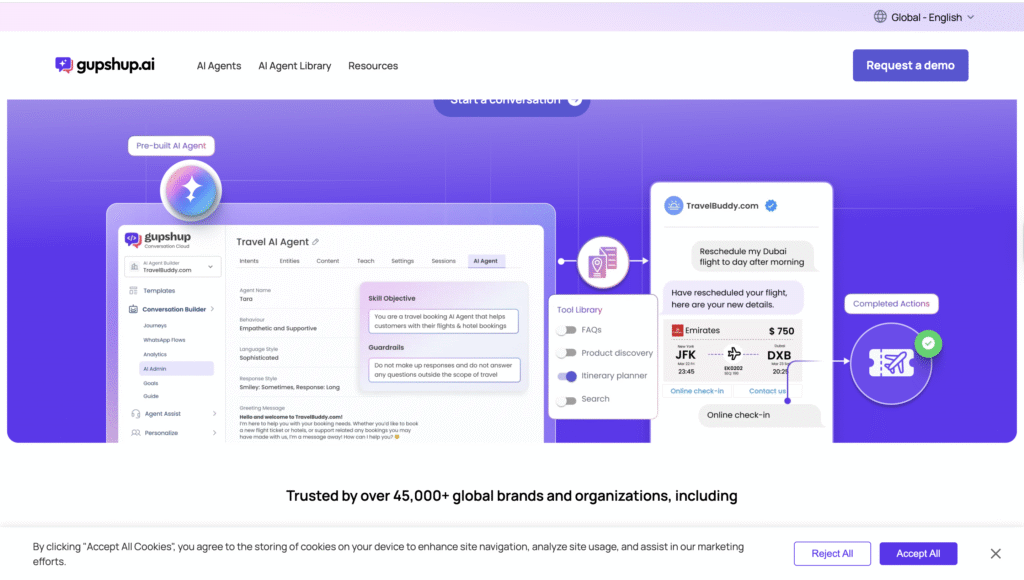
Gupshup is a leading conversation cloud that helps businesses streamline customer communication across multiple channels such as WhatsApp, SMS, and voice. It’s an ideal platform for brands looking to automate messaging, drive engagement, and improve customer experience at scale. With over 45,000 brands relying on Gupshup, it’s a solid choice for businesses seeking reliable, scalable messaging solutions.
Key Features of Gupshup:
Omnichannel Support: Gupshup enables businesses to connect with customers on 30+ channels, including WhatsApp, SMS, voice, and chat, all through a single API.
High-Volume Messaging: Supports over 10 billion messages per month, ensuring that businesses can handle large volumes of communications efficiently.
Seamless API Integration: Easily integrates with internal systems, CRMs, and third-party tools for a unified communication flow.
Automation and Personalization: Automate customer journeys, create personalized messaging flows, and streamline engagement with powerful automation tools.
AI-Powered Chatbots: Build smart bots to handle customer queries, provide recommendations, and assist with order management.
Why Consider Gupshup:
Scalability to handle high message volumes
Easy integration with internal systems and CRMs
Powerful automation for personalized messaging campaigns
Pros and Cons of Gupshup
| Pros | Cons |
|---|---|
| Omnichannel messaging across 30+ platforms | Steep learning curve for new users |
| High-volume messaging capabilities | Occasionally delayed response times from customer support |
| Seamless integration with internal systems | Reporting features could be more customizable and user-friendly |
| AI-powered chatbots for automated support | Pricing can be expensive compared to other platforms |
| Easy-to-use interface and robust API integration | Occasional delays in campaign execution and project timelines |
9. Haptik
Haptik is an AI-powered platform designed to help brands engage, convert, and retain customers with personalized, conversational experiences. Serving over 45,000 brands across multiple industries, Haptik’s conversational commerce platform enables businesses to deliver seamless, scalable customer interactions across more than 20 channels in over 100 languages.
Key Features of Haptik:
AI-Powered Conversational Platform: Build personalized and automated conversations with AI-driven chatbots and workflows.
Omnichannel Support: Engage customers across 20+ channels including WhatsApp, SMS, Facebook Messenger, and more.
Intuitive Bot Builder: A no-code platform for creating dynamic bots and conversational flows without technical expertise.
Advanced Analytics: Provides detailed insights and analytics to optimize customer interactions and measure performance.
Integration Capabilities: Integrates with CRM systems, third-party APIs, and other business tools to streamline workflows.
Why Consider Haptik:
Easy to use and quick to implement
Robust analytics and AI capabilities
Omnichannel support across 20+ platforms
Seamless integration with existing systems and APIs
Pros and Cons of Haptik
| Pros | Cons |
|---|---|
| No-code/low-code platform for easy bot development | Customization for complex workflows may require technical expertise |
| Seamless omnichannel support across 20+ channels | Some advanced features have a learning curve for new users |
| Powerful analytics and reporting tools | Limited product features and innovation around conversion optimization |
| Strong integration capabilities with third-party tools | Some users have reported a need for more proactive support and suggestions |
| Excellent customer support and collaboration | High pricing for certain features and requirements |
10. Kore.ai
Kore.ai is a comprehensive AI platform designed for building powerful chatbots, automation, and AI solutions. Known for its low-code and no-code development capabilities, Kore.ai helps businesses scale their customer service, operations, and marketing through conversational AI. It serves over 500 partners and 400 Fortune 2000 companies, offering flexible deployment options and seamless integrations.
Key Features of Kore.ai:
AI-Powered Conversational Platform: Create intelligent chatbots and virtual assistants for automating customer interactions.
Multichannel Support: Deploy bots across various channels including websites, messaging apps, and voice assistants.
Customizable Workflow: Build complex workflows using drag-and-drop tools, with the ability to integrate external APIs.
Comprehensive Analytics: Leverage detailed analytics for improving bot performance, customer satisfaction, and business efficiency.
Scalability: Designed for enterprises, with the flexibility to scale up to meet business needs.
Why Consider Kore.ai:
Offers AI-driven solutions for customer service, marketing, and operations
Seamless integrations with existing systems, including CRMs and ticketing platforms
Low-code/no-code capabilities make it accessible for non-technical users
Robust reporting and analytics tools for data-driven decision making
Pros and Cons of Kore.ai
| Pros | Cons |
|---|---|
| Low-code/no-code platform for easy bot development | Steep learning curve for new users and advanced features |
| Multichannel support across text, voice, and apps | Response latency issues with LLMs in some cases |
| Powerful AI and automation tools | Some users report glitches while saving configurations |
| Seamless integrations with third-party systems | Customization can be complex for highly specific use cases |
| Excellent customer support and training resources | Documentation for developers could be improved |
Take Your Customer Engagement to the Next Level
In the ever-evolving world of customer support and engagement, selecting the right conversational AI platform is essential to driving business success. Whether you’re looking for advanced AI capabilities, seamless integrations, or scalability, the alternatives to Drift we’ve explored—Verloop.io, Intercom, Tidio, Freshchat, LiveChat, Zendesk, Yellow.ai, Gupshup, Haptik, and Kore.ai—each offer unique features tailored to different business needs.
With platforms like Verloop.io and Kore.ai providing flexibility and robust AI capabilities, and others like Tidio and Freshchat delivering ease of use and cost-effective solutions, there’s an option for every company aiming to improve customer interactions, streamline workflows, and drive growth.
Ready to boost your customer support and engagement? Explore a demo or consult with our experts to find the perfect solution for your business. Don’t settle for average—transform your customer experience today!




